Boreas and Husky. About the future of our submarine fleet
As we said before, today the fleet includes 26 non-strategic nuclear submarines, including:
1. SSGN - 9 units, including 1 units. Ash type and 8 units type "Antey" project 949A.
2. MAPL - 17 units, including 11 units of type “Pike-B” of the 971 project of various modifications, 2 units. of type “Pike” of the project 671РТМ (К) (the third boat of this type, “Daniel of Moscow”, is in a sludge, possibly - decommissioned), 2 units. Condor-type project 945А and 2 units. type "Barracuda" project 945.
In addition, the Russian Navy has a rather impressive non-nuclear submarine fleet consisting of 22 diesel-electric submarines, including 15 units. type "Halibut" project 877, 6 units. 636.3 Varshavyanka Project, 1 units type "Lada" project 677.
Thus, today the Russian Federation has the second most powerful non-strategic submarine fleet of the world, which includes 48 nuclear and non-nuclear submarines. This is a very serious value ... if you do not take into account the age of our boats.
Of the eight Antey SSGNs, the 949А project to 2030 g will have no more than four in the ranks - provided that the existing modernization programs are fully implemented, since only four of the eight existing ships are planned to be upgraded. The remaining four ships to 2030 g will have the age of 38-43, and it is more than likely that they will be removed from the fleet as four modernized ships return to service. From 17 MAPL to 2030, the system will remain good if 6 - four boats will be upgraded (if, of course, it was not cut out from the new HPV) and received the designation 971М and two more boats, one of which is undergoing at least average repair now, and the second, which should receive it in the near future (“Vepr” and “Cheetah”, respectively). From 22 diesel-electric submarines to 2030, there will be 7 - 6 recently built for the Black Sea Fleet Varshavyanok project 636.3 and one (limitedly combat-ready, if efficient at all) Lada-type boat.
Of course, there will be replenishment. It should be expected that, before 2030, 6 PLARKs of the Yasen and Yasen-M types, two XDUMX “Lada” diesel submarines of the 677 project of the 2005 project for 2006-6, will be commissioned. Pacific Fleet. Thus, to 636.3 g .:
1. The number of SSGNs will increase from 9 to 11 units.
2. The number of MAPL will be reduced from 17 to 6 units.
3. The number of diesel engines will be reduced from 22 to 15 units.
In total, the non-strategic submarine fleet of the Russian Federation will be reduced by exactly one and a half times - from 48 to 32 submarines.
And what about our "sworn friends"? Let's leave behind the brackets the European fleets of NATO in order not to multiply entities beyond what is necessary, and look at the US submarine fleet.
To date, the US Navy has 64 non-strategic nuclear submarines (diesel-electric submarines in the US Navy), including:
1. SSGN - 4 units type "Ohio", converted for shooting the CD "Tomahawk";
2. MAPL - 61 units, including 15 units. type "Virginia", 3 units. Sivulf type, and 32 units. type "Los Angeles".
At the same time, the United States shipbuilding programs for submarines are as simple as a perpendicular — there are currently six Virginia submarines under construction, including two boats of this type built into 2018. Americans are going to lay down two boats a year. that by 2030, even if the average construction period of the submarine 3 of the year (today it is rather the 2-3 of the year) is quite capable of increasing the number of Virginia in its fleet to 39 boats. As a matter of fact, already today, in addition to 6, boats under construction have ordered (but not laid) 7 APLs of the Block IV modification and announced the construction of the 10 APLs of the next Block V. modification. Of course, this does not mean that the number of US submarines was commissioned. ships will grow to 88 units. Most likely, it will remain at the current level, because simultaneously with the entry into service of the newest Virginia, old ships of the Ohio and Los Angeles type will be withdrawn from the fleet.
Thus, based on shipbuilding programs announced today, which also include information on fleet modernization, as a result of a 1.5-fold drop in numbers, the submarine fleet of the Russian Navy will be related to the US as 1 to 2 (32 boats against 64).
The double superiority in the forces of the probable enemy is bad in itself, but worse, the simple numerical comparison does not take into account the disposition of our boats. Not less than eight domestic diesel-electric submarines should be left in closed naval theaters, that is, on the Baltic and Black Seas, where they will be blocked by superior forces of the European NATO fleets, even if you can bring several Varshavyanok to the Mediterranean, and in this case the Americans will be enough unleash the power of Los Angeles 3-4 (rather, even less) to confront them. Given the above, the numerical ratio of the submarine forces of the Pacific and Northern fleets in comparison with the US will be 2,5 to 1.
But the main problem of our submarine fleet is not even in numbers, but in the qualitative lag behind the American.
The US Navy is planning to build an 2030 24 generation submarine to 4 g, which will replace the previous 3 generation submarines in the fleet: "Los Angeles" and, possibly, "Ohio". Today, the Americans from the 64 APL only 18 4-generation boats (3 "Sivulf" and 15 "Virginia"), or slightly more than 28%. But by 2030, they will already be 42 (3 "Sivulf" and 39 "Virginia"), that is, the share of 4 generation atomarins, while maintaining the total number of SSGN and MAPL at the current level, will increase from 28% to 65%.
And what about us? Alas, from 14 submarines, which, according to today's data, must replenish the composition of the Russian Navy before 2030, only five YAPen-M MAPL belong to the 4 generation, because the MAPL Kazan (by the way, and “Severodvinsk”) is, rather, the “3 + generation”, since in them, to reduce the cost of construction, the backlog and equipment of the MUPL “Pike-B” were used to a large extent (and even if we leave aside a number of evidence indicating that Yasen-M does not fully meet the requirements of the 4 generation). The rest - six diesel "Varshavyanok" and two "Lada", sadly, in their capabilities still belong to the previous generation. Thus, the problem is not even that our submarines will be half as much, the problem is that from 32 our submarines and diesel-electric submarines with modern boats 3 + - 4 generation will be only about 22%.
In absolute terms, it looks like this - in case, God forbid, of course, Armageddon, our SSGNs conditionally 7 -th generation "Ash" and 4-generation "Yasen-M" will somehow have to withstand 4 "Xi Wolfe" and 3 Virginia. In the ratio of one to six. With that, generally speaking, for submarine missile carriers - carriers of cruise missiles, the main task, nevertheless, is the destruction of enemy surface groups - and the same AUG, and not anti-submarine warfare. Of course, Ash and Yasen-M are capable of fighting enemy submarines, but if we use them exclusively for these tasks, then at 39 US AUG, we still have exactly 10 SSGNs - the upgraded Anteyev of 4 project.
In other words, by 2030, the United States will have the opportunity to “stuff” the seas adjacent to our territorial waters in the north and the Far East with dozens (!) Of the latest generation 4 atomic materials, and we, unfortunately, have practically nothing to answer. As follows from the above, the American submarine fleet by 2030 will surpass ours by a multiple in numbers, and even more in quality. Without a doubt, the situation could be drastically improved by a unified state system for lighting the surface and underwater conditions (EGSSONPO), which they were planning to create a long time ago, but alas, they did not create it, and obviously they will not create it by 2030. And what else? Those few corvettes and frigates that will go into operation before 2030 will not change anything in the balance of power. Marine aviation? If (we repeat - if!) The plans for the modernization of the IL-38 anti-submarine aircraft to the IL-38N are fulfilled, then the Russian Navy will have at its disposal 28 very good patrol and anti-submarine aircraft, which can also work as radio reconnaissance aircraft. But their number is probably enough for one fleet, but certainly not for four!
Thus, if everything is left as it is, then by 2030 g we will lose the ability to control the underwater situation even in the seas washing our territorial waters, which is unacceptable even from the point of view of ensuring the sustainability of the naval component of strategic nuclear forces, strategic missile submarines, carrying intercontinental ballistic missiles (SSBN). This is obviously unacceptable for us, but ... But what are we doing to correct the situation?
You can, of course, expand the construction of the SSGM of the Yasen-M type or its improved version, answering at least one SSGN to two Virginias — in their waters, with the support of some surface and air components, this could perhaps ensure safety deployment areas of SSBNs. But this does not happen - instead of announcing the construction of at least 15-20 atomic (even before 2000 ... of the eleventh year), we limit the number of “Yasens” to seven units and proceed to designing “unparalleled in the world” (who doubted!) MAPL "Husky", and initially it is about the fact that we will start their construction immediately after the delivery of 7 "Ash" and "Ash-M".
What does this mean?
One out of two. Or MAPL “Yasen-M” today is no longer at the cutting edge of technical progress (it would be completely surprising, considering that the original project of “Ash” was created in the last century) and exhausted the possibilities of modernization, which cannot compete with the latest “Blocks” "Virginia". Of course, in this case, its further replication is irrational. Or "Yasen-M" is absolutely modern and suits our military to everyone, except for the price of the product. The fact is that since the time when the basic conditions were announced and the contract price for the Yasen-M series (it followed from them that the cost of one such ship was approximately 39-41 billion rubles), a lot of time had passed and 2014 crisis of the year. Taking into account inflation, it should be expected that the cost of one “Ash-M” in current prices today exceeds 70-75 billion rubles.
Be that as it may, the decision to create a new, 5 generation boat was made. VO readers, who are not indifferent to the state of the Russian Navy, took this news with cautious optimism - the message is certainly joyful, but who knows what will come of it in reality? It is not the good intentions of our Government that the road - the twelve-lane autobahn has long been paved to where the climate is hot, and the servants are agile, but slightly horned ...
Well, here's the recent news. One is good, the Husky-type submarines entered the state armaments program until 2027. The bad news is that the development work on this topic was not accepted, stopped by the Ministry of Defense and will be resumed only after 2020.
What is the reason for such an unexpected reversal? After all, in fact, the works were stopped at the stage of pre-sketch design, that is, at the very early stage of the formation of the appearance of the future ship. To postpone the development and construction of the “Husky” to “sometime later” in the current situation, and without having extremely weighty reasons for that, it is not that stupid - criminal. So what's the deal?
Only one thing comes to mind. You can draw anything on paper (or in the corresponding computer program), paper (hard disk) will endure everything. But no matter how wonderful the design of the boat was, it will not work without the timely readiness of its main components and assemblies. Let us explain with an example - in our country a project of the frigate 22350 was created. It provided for the placement of the newest air defense system "Poliment-Redut". The designers, designing the ship, did everything necessary to install it: provided for its location, organically fitting launchers, radar, ZRK communications into the architecture of the frigate, reserved weights for the complex, etc. etc. To them, to the shipbuilders, there were no questions and no - they created a project of a rather formidable warship. However, the fleet never received these ships - 12 years have passed since the foundation of the Admiral of the Fleet of the Soviet Union Gorshkov was laid out, but due to the unavailability of Poliment-Redut, it still cannot pass state tests.
So, the only good reason for stopping the work on the Huskies is connected with the fact that the development of some key technologies that should have been used on it has been thwarted, and it’s not clear when it will be the result.
So, for example, in the comments of an article on VO, the opinion was expressed that the presence of a screw (and not a jet engine) on the MAPL "Ash" and "Ash-M" is a consequence of the fact that we cannot yet create electric motors for submarines of sufficient power, in order to provide them a silent 20-node motion. Accordingly, we are forced to use a turbine for such speeds, but in this case the water cannon will not have the advantage of a pre-screw. The author of this article is incompetent in this matter, but let's assume that this is a fact. Suppose also that the development of such engines in the Russian Federation is in full swing, and in 2016, when the development of the Huskies began, it was expected that the newest submarines would receive a water cannon. And now, let's say that work on electric motors has stalled and does not give an acceptable result. What to do designers Husky? Design a boat with a water cannon, despite the fact that in the end the newest ship can be left without a mover? Or initially put in the project is not the best design solution?
In other words - with a strong desire to come up with a logical reason for the suspension of the creation of "Huskies" is still possible. But then what? Of course, it was said that the head “Husky” will be commissioned before the end of 2027. It is difficult to say who this statement is intended for — we have planned to build serial Boreas A by 6-7 years, MAPL are much more complex technical the object and even in the most beautiful and magnificent case of the head boat of the new project we will build the 7 years. And this means that in order to introduce it into the fleet in 2027, it must be laid in 2020, we are “going to resume work on pre-sketch design at the beginning of 20's!” This means that even in the best case, before 2023-2025. There is no need to wait for the heading of the Husky, and in this case its entry into the fleet should be expected at the beginning of the 2030s.
But what about the fleet? There are no “Ash trees”, because the series is limited to seven units, “Huskies” are not, because there were problems with the design ... And who could fight the “Virginia”, what happens?
The situation could have been corrected to some extent by the deliveries of non-nuclear submarines, but the problem is that apart from the “Varshavyanok” project of 636.3, which, anyway, is no match for the newest American submarines, we have no submarines, and, again, is foreseen. The Lada project was unsuccessful, and, as can be understood from the media, not by the design of the boat itself, but because its newest systems did not reach the desired characteristics (hello Polymer Redut!). Accordingly, it can be assumed that until the issues with electric motors, lithium-ion batteries or a VNEU, sonar complex, etc., are resolved. etc. the series will not continue. And before that, it is still very far away - for example, the head of the USC, Alexei Rakhmanov, in 2017 reported that "the construction of the first Russian non-nuclear fifth-generation submarine can begin in five years." Needless to say, the words “may” and “in five years” are absolutely equivalent in our reality to the expression “When the cancer on the mountain will whistle”?
In other words, there is a persistent feeling that domestic submarine shipbuilding has gone into a deaf deadlock and it will be necessary for how many years to get out of it. The arrival of multi-purpose boats of the 5 generation is postponed indefinitely, and our submarine defense lines, which are still cracking at the seams, a decade later, will be completely exposed.
What should have been done to avoid all this? The answer is very simple. Due to the fact that the design of multi-purpose atomarins of the 5 generation is an extremely complex and time-consuming process, and the continuation of the serial construction of Yasen-M submarines, apparently too expensive, should be done in parallel with the Husky work to create a simplified and the lightweight version of "Ash-M" (let's call it "Yasen-MU", where the letter "U" means "Simplification"). It seems, for example, that the dismantling of 32 launchers of anti-ship missiles would have the most positive effect on the price of the Ash-M, and possibly on its other indicators.
The author of this article understands what shaft of criticism can cause the last sentence - alas, today's realities are such that a great number of people cannot perceive the ship as a combat at all if the Kalibr anti-ship missiles are not installed on it. But the installation of “Calibrov” on any scow, up to a non-self-propelled barge, makes this barge in the eyes of these people the ruler of the seas, in a manner capable of sweeping away all 10 AUG US from the surface of the World Ocean. And then there was a new "toy" - hypersonic "Dagger". The comments have already sounded the proposal to install the "Daggers" on ... anti-diversion boat "Rook".
But the fact is that in order to combat enemy submarines, anti-ship missiles are completely unnecessary, and fighting them, destroying and squeezing Virginia from the deployment areas of our SSBNs is necessary - this is the most important task of the fleet. The preservation of the strategic nuclear potential is alpha and omega, the absolute priority of the Russian Navy, and all other tasks (including countering AUG) should and can be solved only after an acceptable level of safety of our SSBNs is ensured. Therefore, nuclear-powered submarines torpedoes (or rather, not purely torpedoes, since no one interferes with the use of cruise missiles if necessary, taking them instead of a portion of the ammunition torpedoes) will always have "work" in the Russian Navy.
Yes, of course, the torpedo submarine is not as universal as the boat carrying cruise missile launchers. But we must understand that by using part of the submarine forces to protect the waters of our coastal seas, we automatically sacrifice some of their functionality, because, as we have said, the strike capabilities of cruise missiles cannot be used in anti-submarine warfare. And having a project of such a boat, largely unified with Yasenem-M, we could now solve all the problems - to continue the construction of nuclear submarines ensuring the fulfillment of the fleet’s key task, but not overwhelming the defense budget. And “hurrying slowly” to design the Huskies, allowing themselves a delay of a year or three where it is really necessary, in order to eventually launch the 5 underwater nuclear-powered submarine into the series.
Alas, nothing of the kind happened to us, and we are going at full speed in the era of total underwater domination of the United States Navy - including in our coastal waters. Well, we live with this. Since this is happening, it is useless to moan and wring hands — one needs to accept this fact as a given, and make plans based on the actual state of affairs (the ostrich posture has not saved anyone in this world, including the ostrich itself). And here our further actions are seen very well: if we cannot ensure the safety of our SSBNs in the deployment areas, then we need to curtail the program for their construction until we can do it. There are more than enough available in the ranks and in the construction of eight modern BORIL and Borey-A SSBNs to prevent our fleet from forgetting what SSBNs are, save their bases, infrastructure, and so on. Until that glorious time, when we can recreate the submarine fleet of sufficient strength to revive the naval component of the Strategic Nuclear Forces in all the splendor of its formidable power.
The problem is that we do not have too many nuclear weapons - those (roughly) and a half thousand strategic nuclear warheads, which we, according to international agreements, have the right to keep deployed, are not enough for the total destruction of the United States alone. Yes, I understand that now there will be a lot of replicas “one special warhead in Yellowstone - and goodbye America”, but the truth is that the USSR had 46 000 of those very special warheads, not counting tactical ammunition. And even if we assume that the destruction of the United States and NATO with this arsenal was guaranteed with a triple reserve, then in this case our today's first strike 1500-1600 warheads look at least modest.
And this means that we simply cannot afford to lose these very warheads - on the day when Armageddon blows out, they should fall on the enemy, and not remain forever in the cold depths of the northern seas. At the same time, the death of even one SSBN, provided that each of its missiles carries all 4 warheads, will lead to the loss of 64 warheads, which will be quite noticeable 4% of the total number of deployed SNF warheads. And if the SSBN will go on the last trip, having a special BBY on the rocket on the 10?
Again, in the comments on the Higher Educational Institution, you constantly encounter such a point of view: “But why should our SSBNs deploy somewhere, if they are able to work from the moorings on the territory of the same United States?”. This is a fair observation, but you need to understand that using the SSBN as a floating battery standing at the pier completely makes senseless the very idea of a submarine with intercontinental ballistic missiles on board.
The fact of the matter is that it’s really, absolutely no difference where the SSBN is located if we strike first. Only in this case, we do not need submarines at all - conventional mine installations will cope with it just as well, and they are significantly, at times (if not orders of magnitude) cheaper. SSBNs make sense only for a reciprocal nuclear missile strike, their essence is that if the enemy suddenly attacked us with all its nuclear power, then the short flight time of its ballistic missiles (of the order of 30-40 minutes) may lead to the country's leadership just do not have time to give the necessary orders in time, and ground-based missiles will be burned in a nuclear flame. And in this case, there are SSBNs - in the period of aggravation of the international situation, they leave for the sea, where their location should not be determined by the enemy. The covert deployment of SSBNs allows an attacked country to retain part of its nuclear potential for retaliatory strike.
If we leave the SSBNs at the piers in the bases, which will, of course, be the primary object of attack (and most likely the tactical nuclear forces will be destroyed even before the strategic “presents” from another continent), then there is no point in making a garden. If we have time to respond before a nuclear hell collapses, then the SSBNs are not needed and we can do with ground-based ICBMs, and if we don’t have time, then the SSBNs will be destroyed in the fleet bases without harming the enemy, and, therefore, are not needed .
In other words, SSBNs are effective only when they are covertly deployed into the sea, and for this it is necessary to be able to "squeeze" enemy multi-purpose atomarins from the deployment areas. With the forces at our disposal, we cannot and will not be able to guarantee the covert deployment of our SSBNs in the foreseeable future, which means that it is meaningless to build new boats of this class in addition to the eight Boreas that are being built and built now.
But nevertheless, this is exactly what we are going to do! Although let's be clear - for the combat sustainability of our strategic nuclear forces it would be much more useful not to build new Boreas, but to lay down at least the same Yaseny-M (with funds allocated for new Boreas) that would ensure the safety of existing and existing in the construction of boats.
Well, Russia, as always, has its own way. We decided to build SSBNs, the actions of which we cannot provide, so be it. But ... it seems to be obvious that in this case our submariners will have to act in the most difficult conditions. They will have to hide in the waters teeming with the most modern atomic enemies of the enemy, and no, let the most minimal technical advantage be for them. That is, if we are going to send our SSBNs into the mouth of a powerful enemy, then we need to build the best we can do, because only in this way can we count on some acceptable survival rate of our SSBNs before they apply their basic weapon.
Such boats were designed: after the “Boreev”, representing a certain cross between the third and fourth generation atomarines, and several improved “Boreev-A”, we were preparing to build the “Borei-B”. The author of this article is not a professional submariner, but he has heard that it is Borey B that is closest to the top, the limit of the technologies that we have today. If someone has a chance to survive on “Virginia” to 2030, and still strike when an order arrives, then this “Borey-B” is the best that we could build for our submariners.
The project is ready ... and so what? And nothing. Literally nothing. The “Borea B” project, you know, does not meet the “cost / effectiveness” criteria and therefore will not go into the series. We will build a much less advanced "Borei-A."
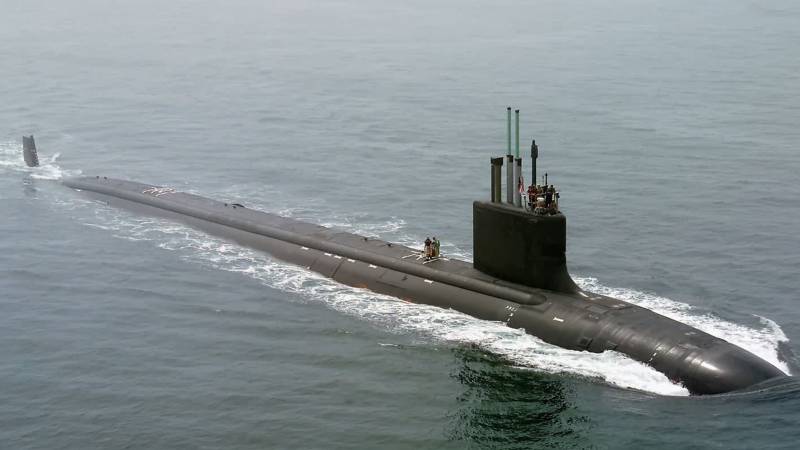
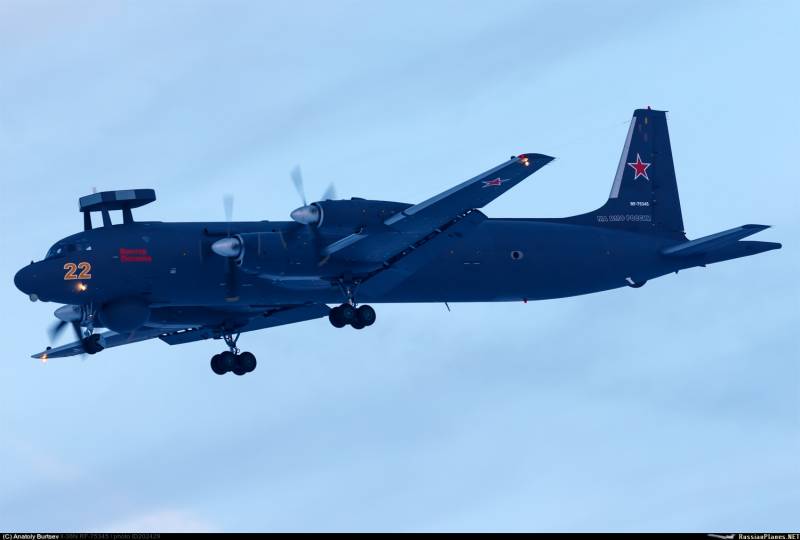
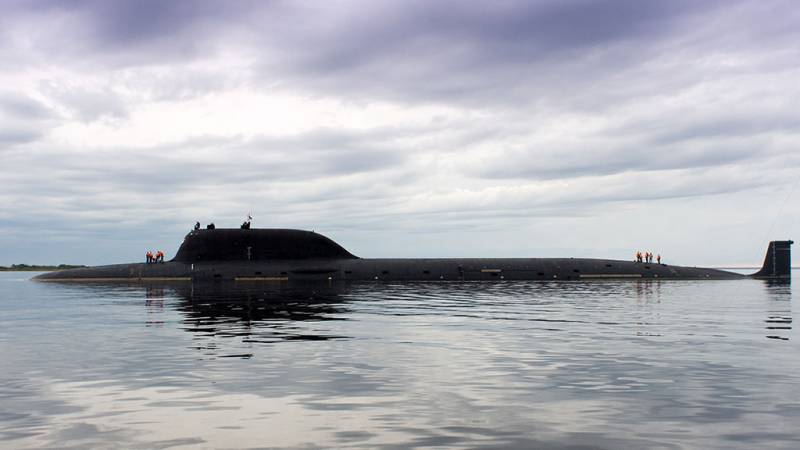
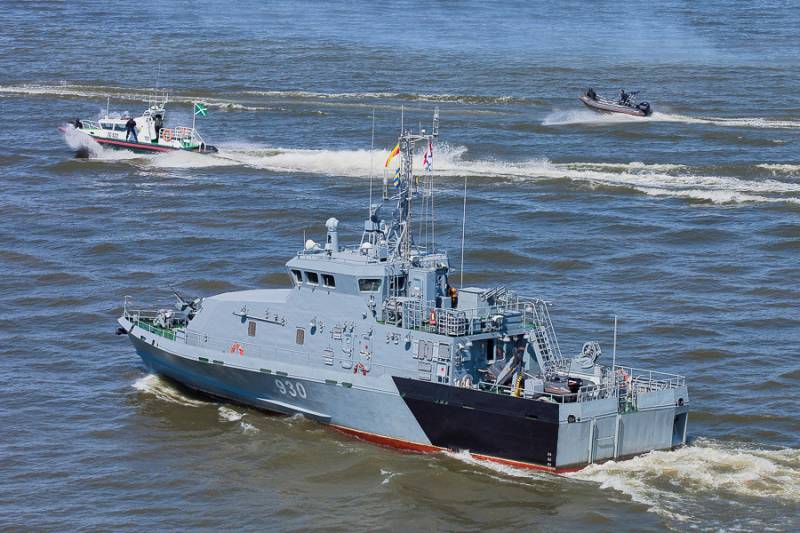
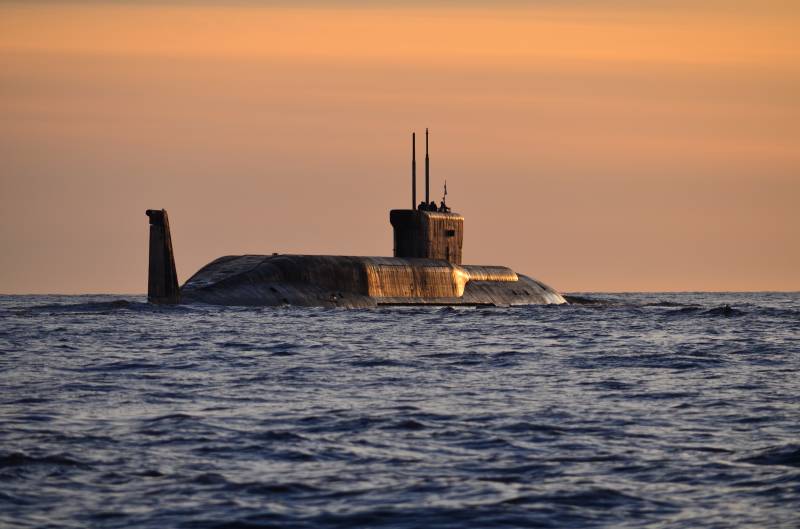
Information